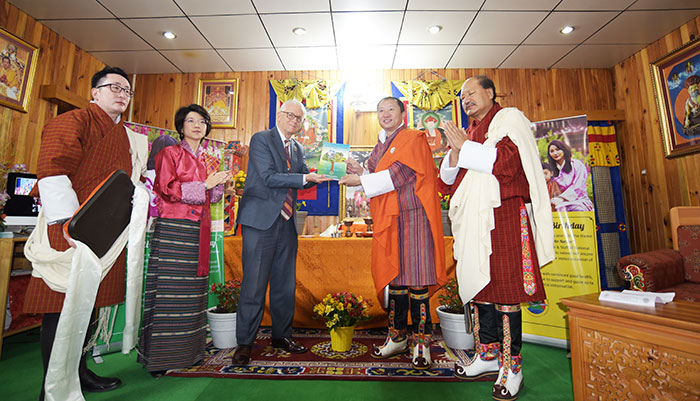Choki Wangmo
Coinciding with the 30th birth anniversary of Her Majesty The Gyaltsuen, the national environment strategy (NES) 2020 was launched at the National Environment Commission (NEC) secretariat in Thimphu yesterday.
The document, which aligns with the relevant environmental policies, legislations and regulations, aims to balance and enhance implementation of the existing legislation in different governing bodies.
The new strategy is also critical in shaping the 21st Century Economic Road Map and support the implementation of the successive five-year plans. It has four core chapters on water, air, life and land and reflects on the integrated approach to meet the sustainable development goals while addressing the key challenges of climate and biodiversity.
NEC chairman Dr Tandi Dorji said: “The environment strategy is important in guiding environmental conservation and giving equal importance to social, cultural and economic development. It will help all sectors in prioritising their plans and programmes within the ambit of the environmental concern.”
In a virtual address, the United Nations Under-Secretary-General and Executive Secretary of UNESCAP Armida Salsiah Alisjahbana said that NES is a model of cooperation developed through a multi-stakeholder policy development process, firmly grounded in sustainable development.
“It provides an overarching framework for all existing environmental policies of Bhutan, with priority areas linked directly to UN’s 2030 agenda for sustainable development.”
The UN Resident Coordinator, Gerald Daly said that the strategy was an example of the best global practices in environmental policy formulation, incorporating the integrated implementation of the 2030 agenda.
UNDP’s resident representative, Azusa Kubota said that the launch of NES comes during a defining year for climate change. This year is the super year for nature and biodiversity. “While the COP26 was postponed to next year due to the pandemic, we must not lose focus on climate action.”
She reaffirmed the UNDP’s support to the government in climate action and biodiversity conservation.
Recognising the challenges of uncontrolled economic development, the first NES was drafted in 1998, the guiding document titled, ‘The Middle Path’, which chose the middle path of sustainable development to raise the living standards of the populace without compromising the country’s cultural heritage.
Since then, the environment is seen as an issue that cuts across a wide range of development sectors. Therefore, environmental management has expanded beyond the traditional domains of few agencies.
However, rapid demographic changes and urbanisation are posing threats to the environment. Large tracts of forest are either lost to fires or cleared in pursuit of socio-economic development through roads, infrastructures, and mining, among others.
The strategy was drafted in consultation with the government and task force members from all the sectors of government, including the UN, NGOs, and the private sector.
UN ESCAP and UNDP funded the revision and implementation of the strategy.
Meanwhile, the winners of the online nature photo contest on international biodiversity day and winner of the waste flagship programme logo were awarded certificates and prizes.
Her Majesty The Queen is the Royal Patron of NEC and the ozone ambassador of the United Nations Environment Programme.


